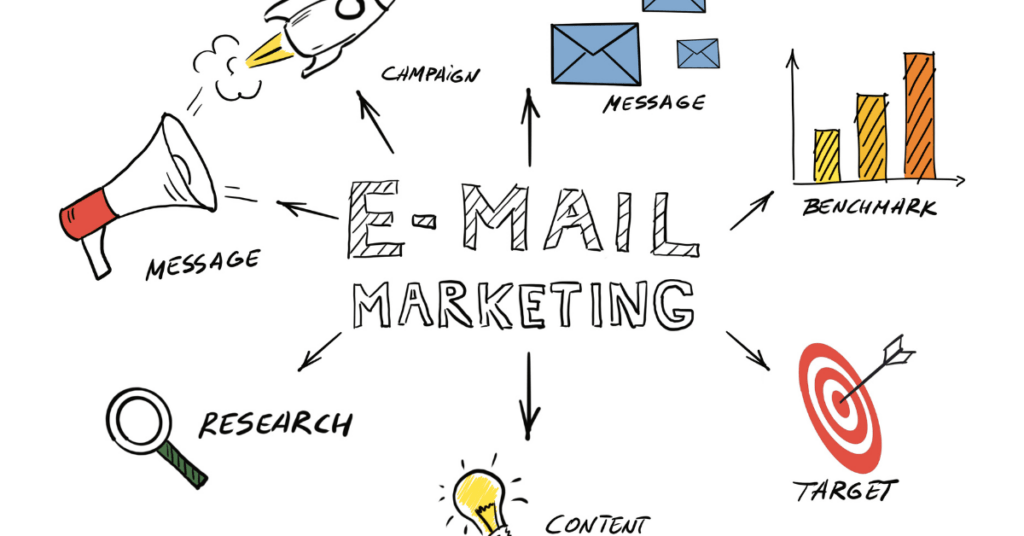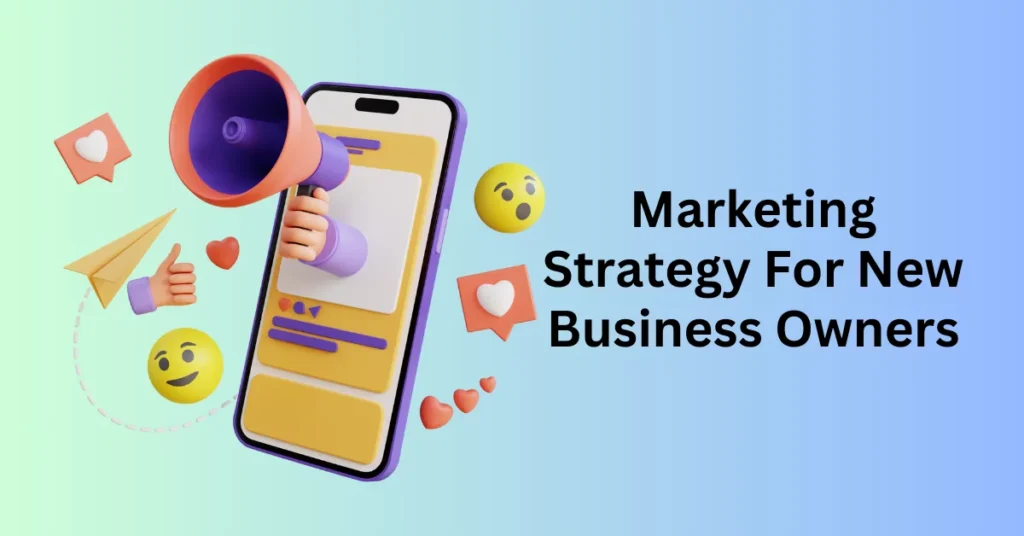Starting a new business is an exciting journey filled with opportunities and challenges. As a new entrepreneur, one of the most crucial tasks you’ll face is building your brand and reaching your target audience. With countless marketing strategies to choose from, it can be overwhelming to decide where to focus your efforts. You will need to pick one effective marketing strategy to start with, and then expand to others.
The good news is that you don’t need a massive budget or years of experience to make a significant impact. In fact, some of the most effective marketing strategies are surprisingly simple and can be implemented with minimal resources.
In this blog post, we’ll explore five easy marketing strategies designed specifically for new entrepreneurs. These approaches are not only straightforward but also cost-effective, allowing you to start making progress right away. Whether you’re looking to build your brand, generate leads, or drive sales, these strategies will help you create a strong foundation for your business and set you on the path to success. Let’s dive in and discover how you can harness these easy marketing tactics to kickstart your entrepreneurial journey.
Marketing Strategy 1: Cold Email

Cold email is the process of proactively reaching out to new potential customers or clients via email. Unlike warm emails, which are sent to recipients who have already shown interest or engaged with your brand, cold emails target individuals or businesses who may not yet be familiar with your product or service. The goal is to introduce your offering, provide valuable information, and create opportunities for further engagement. Crafting effective cold emails involves personalized messaging, clear value propositions, and a compelling call to action to capture the recipient’s attention and prompt response.
How to Use Cold Email to Grow Your Business
Cold emailing can be a highly effective strategy for expanding your business and reaching new customers. A valuable resource on this topic is “The Cold Email Manifesto” by Alex Berman and Robert Indries. While reading the entire book is recommended for a comprehensive understanding, here is a streamlined approach based on their insights.
Start by registering a new domain name that closely resembles your main domain. Create an email account associated with this new domain to enhance deliverability and avoid impacting your primary domain’s reputation. To further ensure your emails land in inboxes and not spam folders, use an email warm-up tool like Lemwarm. This tool simulates natural email exchanges, helping to gradually build your new email account’s reputation.
Next, develop a lead list by creating a spreadsheet to track potential contacts. Although you can compile this list on your own, it may be more efficient to hire a freelancer from platforms like Fiverr. To craft effective outreach messages, use proven cold email templates. Begin your cold emailing efforts by sending just 10 emails per day. Monitor the results and, as you gain confidence and insights, gradually increase the number of emails to 100 per day. Tracking manually can become troublesome. So, consider investing in specialized cold email software like Lemlist to streamline the process and analyze performance effectively.
As you fine-tune your approach, aim to schedule 10 calls and secure at least 1 sale for every 100 cold emails sent. This benchmark will help you gauge the effectiveness of your outreach and make necessary adjustments.
Advantages of Cold Email
Cold emailing offers several significant advantages that make it an attractive option for reaching potential customers. One of the primary benefits is its affordability. Compared to other marketing strategies, cold emailing requires minimal financial investment, making it accessible even for businesses with tight budgets.
Additionally, cold emailing is relatively easy to master. Since most people are already familiar with sending emails, the main challenge how to craft compelling messages that capture the attention of potential customers. This simplicity allows you to start experimenting and refining your approach quickly.
Furthermore, cold emailing is a fast way to acquire paying customers. With a well-targeted list and a persuasive email strategy, you can reach out to potential clients directly.
Disadvantages of Cold Email
Despite its advantages, cold emailing comes with several notable disadvantages. One major drawback is the significant amount of time it requires. Crafting and sending 100 personalized emails can take at least four hours. Over a five-day workweek, this amount of hours dedicated to cold outreach can be a considerable drain on time and resources.
Scaling cold email campaigns also presents challenges. Sending 100 cold emails per day may be the upper limit before you risk being flagged as spam. Many email service providers have strict policies. Exceeding certain thresholds can lead to your emails being marked as spam long before reaching this limit.
Additionally, while cold emailing is legal in many jurisdictions, it is crucial to differentiate it from spam. Violating regulations such as the CAN-SPAM Act can result in substantial penalties, with fines reaching up to $51,744 per violation. This legal risk underscores the importance of adhering to best practices and ensuring compliance with relevant laws to avoid costly repercussions.
Cold email is an exceptionally cost-effective marketing strategy and relatively straightforward to learn. However, it demands a significant investment of time and presents challenges in scaling. As a result, cold emailing is well-suited for new entrepreneurs who may have limited financial resources but ample free time. For those who need to start generating revenue quickly to cover expenses, cold emailing can be an ideal solution. It allows them to reach out to potential customers directly and begin building their business without a substantial upfront investment.
Marketing Strategy 2: Social Media Marketing

What is a Social Media Marketing Strategy?
Social media marketing is the process of using social media platforms to build and engage with an audience, and then leveraging that audience to promote and sell products or services. This strategy involves creating and sharing content, such as posts, images, videos, and advertisements, to attract and interact with potential customers. By developing a strong social media presence and fostering relationships with followers, businesses can enhance brand visibility, drive traffic to their website, and ultimately increase sales. Social media marketing also includes analyzing engagement metrics to refine strategies and improve overall effectiveness.
How to Use Social Media Marketing to Grow Your Business
To effectively use social media marketing for business growth, start by choosing a platform that aligns with your business objectives and where your target audience is most active. Each social media platform attracts different demographics, so select the one that best matches your brand’s needs.
Next, develop a content calendar that you can maintain consistently. While the ideal posting frequency may vary by platform, aim to publish at least one new piece of content each day. Emphasize quality over quantity to keep your audience engaged and ensure your brand remains visible.
Allocate time each month to batch-create content for the upcoming month. Tools like Jasper and Firefly can streamline this process, allowing you to produce content more efficiently. Once your content is ready, schedule your posts using automation tools such as Buffer, MeetEdgar, or Flick. This helps you maintain a steady online presence without the need for daily manual posting.
Daily engagement with your audience is crucial. Set aside time each day to reply to comments on your posts. This not only boosts engagement on individual pieces of content but also encourages more interaction from your followers, fostering a stronger community.
Networking within your niche is also important. Spend time each day connecting with others in your industry. Share their content when relevant, leave thoughtful comments, and reach out via direct messages to build personal connections.
Finally, include a link to your lead magnet landing page in your bio, accompanied by a brief call-to-action. Focus on consistently publishing high-quality content rather than overtly promoting your free offer. Those who find your content valuable are more likely to explore your lead magnet on their own.
By following these steps, you can leverage social media marketing to effectively grow your business, engage with your audience, and drive conversions.
Advantages of Social Media Marketing
Social media marketing offers several key advantages for growing your business. First and foremost, it is free. No matter your financial situation, you can create social media profiles and start posting without any cost. Additionally, by consistently publishing high-quality content and actively engaging with your followers, you can benefit from increased exposure over time. Social media algorithms are designed to reward engagement, meaning that as you build interaction and engagement, the algorithm will likely boost your visibility, helping you reach a larger audience.
Disadvantages of Social Media Marketing
Despite its benefits, social media marketing comes with its own set of challenges. Building a substantial social media following can be a time-consuming process. While you might see significant growth in 2-3 years with consistent effort, the initial stages can be particularly discouraging. The first year can be especially tough, as it may take several months of high-quality content and consistent posting to see modest growth, such as gaining only a few hundred followers. This slow progress can lead to frustration and is a common reason why many people give up on their social media marketing efforts.
Social media marketing is a highly affordable and relatively easy-to-master strategy that doesn’t require a significant financial investment. However, it demands a commitment to consistently posting high-quality content over an extended period to build a meaningful following. For new entrepreneurs with a stable job and some spare time to dedicate to social media efforts, this strategy can be particularly effective. By understanding and accepting the time investment required, you can leverage social media marketing to grow your business and enhance your brand’s presence.
Marketing Strategy 3: Email Marketing

What is Email Marketing Strategy?
Email marketing is a strategic practice that involves building and managing a list of email subscribers and using this list to promote and sell products or services. The core of email marketing is to create meaningful and targeted communication with your audience through email. This practice starts with collecting email addresses from individuals who have expressed interest in your brand, often through sign-up forms on your website, lead magnets, or other opt-in methods.
Once you have an email list, the goal is to leverage this direct channel to engage with your audience regularly. Email marketing encompasses a variety of activities, including crafting personalized email campaigns, sending newsletters, promotional offers, product updates, and educational content. Effective email marketing aims to build relationships with subscribers by delivering valuable content that resonates with their needs and interests.
In addition to driving sales, email marketing helps nurture leads, increase customer retention, and foster brand loyalty. It allows businesses to segment their audience based on their behaviour, preferences, and demographics, ensuring that the right message reaches the right people. By utilizing analytics and tracking metrics such as open rates, click-through rates, and conversion rates, businesses can continuously optimize their email campaigns for better performance and return on investment.
How to Use Email Marketing to Grow Your Business
To effectively use email marketing for business growth, start by developing a weekly email newsletter that will resonate with your target audience. The content should be engaging and relevant, addressing the interests and needs of your subscribers.
Once you have your concept, choose an email marketing platform that suits your needs. Platforms such as GetResponse offer various features for managing and automating your email campaigns, making them excellent choices for creating and distributing your newsletter.
Next, create a dedicated landing page where visitors can subscribe to your newsletter. Make sure this page is appealing and easy to navigate to encourage sign-ups.
Set up a confirmation and deliverability welcome email to acknowledge new subscribers. This email should confirm the subscription, provide a warm welcome, and outline what subscribers can expect in future newsletters.
Prepare each issue of your newsletter in advance by setting aside time each week to work on it. Aim to have each edition ready at least one day before it is scheduled to be sent out to avoid last-minute stress and ensure timely delivery.
Leverage your social media presence to promote your newsletter. Add a link to your newsletter in your social media bio and share sneak peeks or highlights of each issue a day before it goes out. This will help generate interest and drive new sign-ups.
Besides, regular delivery helps build trust with your audience and keeps them engaged with your content.
Finally, include subtle promotions in the “P.S.” section of your newsletter to highlight your products or services. While occasional special announcements can be made in the body of the newsletter, avoid making promotional content the main focus of every issue. This approach ensures that your newsletter remains valuable and engaging while also serving as a tool for business growth.
Advantages of Email Marketing
Email marketing offers several compelling advantages for business growth. One of its primary benefits is its ability to decrease customer acquisition costs (CAC) while increasing customer lifetime value (LTV). By maintaining direct communication with your audience through email, you can nurture leads more effectively, leading to higher conversion rates and repeat purchases. This not only enhances customer loyalty but also improves your profit margins over time. Additionally, email marketing provides a highly targeted and personalized approach, allowing you to tailor your messages to specific segments of your audience, further optimizing your marketing efforts.
Disadvantages of Email Marketing
Despite its benefits, email marketing has its drawbacks. Building and growing an email list requires a well-thought-out marketing strategy. You need to consider how to effectively promote your newsletter and attract subscribers. Compared to social media, where growth can be relatively faster, growing an email list is often more challenging and slower. The initial stages can be particularly tough, as acquiring a substantial number of subscribers may take time and persistence.
Email marketing is a cost-effective, relatively easy-to-master strategy that doesn’t demand a significant time investment. However, to successfully grow your email list, you need a robust promotion plan. It may take a few years to build a sufficiently large email list to generate substantial revenue. Therefore, email marketing is particularly suitable for new entrepreneurs who have a stable job, some spare time to focus on their newsletter, and an existing marketing channel to promote it. Generally, starting with a social media following and using it to launch and grow your email list can be an effective strategy if you are starting from scratch.
Marketing Strategy 4: Video Marketing

What is a Video Marketing Strategy?
Video marketing involves creating and using video content to engage and build an audience on platforms such as YouTube and TikTok. This strategy leverages the power of visual and auditory elements to attract and retain viewers, ultimately aiming to drive sales and promote products or services. By producing compelling videos—whether they are tutorials, product reviews, testimonials, or entertainment—you can capture the attention of potential customers and foster a loyal following. Video marketing not only helps in building brand awareness but also enhances customer engagement by providing valuable and shareable content that can lead to increased conversions and sales.
How to Use Video Marketing to Grow Your Business
To successfully use video marketing for business growth, start by analyzing popular YouTube channels in your niche. Evaluate their strengths and weaknesses to find ways to bring something unique to your content. This research will help you understand what works well and identify opportunities to differentiate your videos.
Next, invest in high-quality filming equipment. You can start with a smartphone, a good microphone, and proper lighting significantly improves production quality.
Develop a content schedule that you can consistently follow. Aim to publish one video per week on the same day to build a routine and keep your audience engaged. Allocate dedicated time each week for video creation, keeping in mind that producing high-quality videos can be time-consuming, especially if you’re new to the process.
Each video should target a popular keyword relevant to your niche. Utilize YouTube’s search suggestions to find effective keywords and tailor your content accordingly. Conduct competitive research by analyzing the top 3-5 videos ranking for your target keyword.
When shooting your video, ensure you include a clear call to action at the end, encouraging viewers to check out your lead magnet or subscribe to your weekly email newsletter. After filming, edit your video with AI software and create a consistent thumbnail using an AI text-to-image generator.
Upload your video, making sure to handle all technical aspects like adding tags to improve visibility. Once published, actively engage with viewers by replying to comments. This interaction boosts engagement and helps build a connection with your audience.
Finally, repurpose your video content to create short clips for platforms like YouTube and TikTok. Promote your new video on social media and in your weekly email newsletter to maximize its reach and attract more viewers.
Advantages of Video Marketing
Video marketing is a powerful tool for business growth, primarily because video content is increasingly becoming the preferred medium for audiences worldwide. This trend suggests that video’s relevance will continue to grow in the foreseeable future. By leveraging video marketing, you can tap into this widespread preference, engaging with your audience through a format that is highly effective for communication and storytelling. The visual and auditory nature of video can capture attention more effectively than other forms of content, enhancing brand visibility and driving engagement.
Disadvantages of Video Marketing
Despite its advantages, video marketing comes with notable challenges. Building a substantial following on platforms like YouTube typically requires 2-3 years of consistent effort and high-quality content. Additionally, you might underestimate the amount of time, energy, and financial investment needed to grow a popular YouTube channel. From producing and editing videos to promoting your content and engaging with viewers, the demands of video marketing can be considerable.
Video marketing offers the opportunity to leverage the growing popularity of video content to enhance your business’s reach and engagement. However, it is a long-term and resource-intensive endeavour. Building a successful YouTube channel requires significant investment in time, energy, and money. Therefore, this strategy is most suitable for new entrepreneurs who have a stable job to support their financial needs and are prepared to dedicate substantial resources to developing their video marketing efforts.
Marketing Strategy 5: Paid Advertising

What is a Paid Advertising Marketing Strategy?
Paid advertising involves promoting your products or services through paid ads. In the online marketing context, this generally means running ads on platforms such as Google Search and various social media channels. Paid advertising allows you to target specific audiences, enhance visibility, and drive traffic to your offers through strategically placed advertisements.
How to Use Paid Advertising to Grow Your Business
To effectively use paid advertising for business growth, start by building a well-defined sales funnel. This funnel will guide potential customers from initial contact to conversion. Next, select a single social media platform to focus your advertising efforts on.
Create an ad campaign designed to promote your lead magnet, which is a valuable resource offered to attract potential customers. Begin with a modest daily budget to test the waters and gradually optimize the campaign through split testing, also known as A/B testing. This process involves experimenting with different ad variations to determine which performs best.
As you identify effective strategies and learn how to run the campaign profitably, incrementally increase your daily budget. Continue this gradual scaling until you reach a point where further increases are no longer feasible or cost-effective. Once you’ve mastered advertising on one platform, consider expanding your efforts to other platforms to broaden your reach.
It’s important to note that your paid advertising efforts should focus on driving traffic to your lead magnet landing page rather than directly to your sales pages. This approach is designed to build your email list and nurture leads before pushing for a sale. For more detailed insights into this strategy, refer to our guide on customer acquisition.
If you’re new to running ads on your chosen platform, numerous free resources are available on YouTube. However, for a more comprehensive understanding, consider purchasing a well-reviewed course during Udemy’s sales, which typically cost between $10 and $20.
Advantages of Paid Advertising
Paid advertising offers several significant advantages, the most notable of which is speed. It allows you to generate traffic almost immediately, provided that your ads are effective in capturing clicks. This rapid influx of potential customers can be crucial for quickly establishing your business presence.
Another key advantage is targeting. Social media platforms and search engines provide sophisticated targeting options that let you reach specific audiences based on demographics, interests, and behaviours. This precision ensures that your ads are seen by the most relevant potential customers, enhancing the efficiency of your advertising efforts.
Scalability is also a major benefit of paid advertising. Ad campaigns can be scaled relatively easily by increasing your budget. If your campaign is generating positive results, you can double your ad spend to aim for double the sales. While this linear growth might eventually face diminishing returns, substantial progress can be made by simply investing more in a successful campaign.
Disadvantages of Paid Advertising
Despite its advantages, paid advertising comes with challenges. One of the primary drawbacks is the steep learning curve. It can take time and experience to understand how to create and manage effective ad campaigns. During this learning phase, you may incur costs without seeing immediate returns.
Additionally, managing paid advertising requires careful financial oversight. If your calculations are off, you could quickly find yourself spending more than you are earning. The most crucial metric to monitor is the ratio of Customer Acquisition Cost (CAC) to Customer Lifetime Value (LTV). Ensuring that your CAC is lower than your LTV is essential for maintaining profitability.
Paid advertising can be an effective method for quickly driving traffic and growing your business, but it requires a solid understanding of the platform and a sufficient budget. This strategy is best suited for new entrepreneurs who have a stable job with disposable income, are willing to invest in their business, and are prepared for the trial-and-error process involved in learning how to run successful ad campaigns.
Final Thoughts: Marketing Strategy For New Business Owners
Our co-founder Russell Brunson used sales funnels to take ClickFunnels from zero to $100M+ in annual revenue in less than a decade.
Needless to say, he had to drive a TON of targeted traffic to those sales funnels in order to achieve that.
In his best-selling book “Traffic Secrets”, he shares proven marketing strategies that YOU can use to drive targeted traffic to YOUR website and sales funnels.
In this book, you’ll learn how to:
- Find your dream customers online
- Tap into other people’s distribution channels
- Build an army of affiliates that will sell your product for you
…and so much more!
“Traffic Secrets” is available on Amazon where it has over 2,500 global ratings and a 4.7-star overall rating.
But you can also get it directly from us for free…
All we ask is that you pay for shipping!
So what are you waiting for? 🧐


